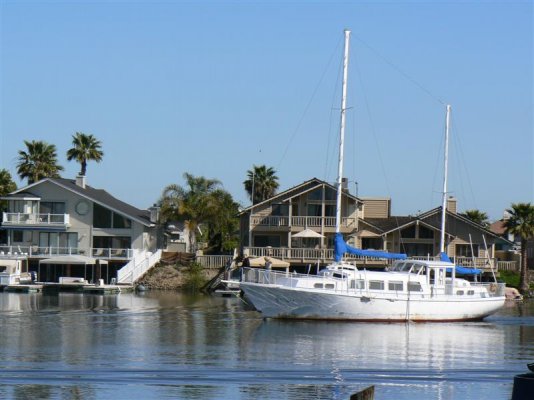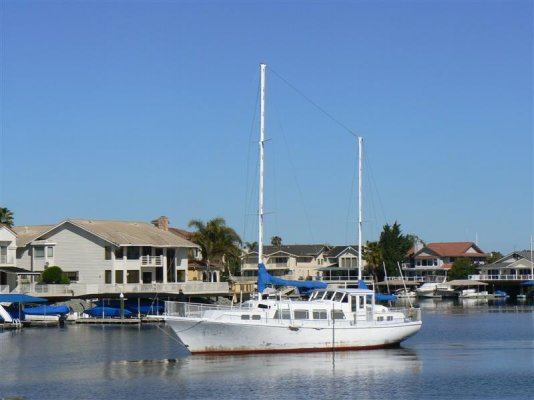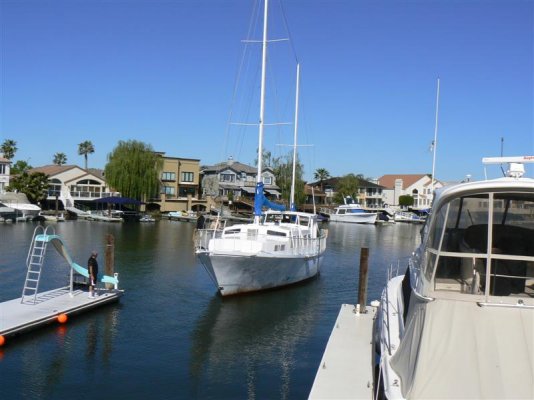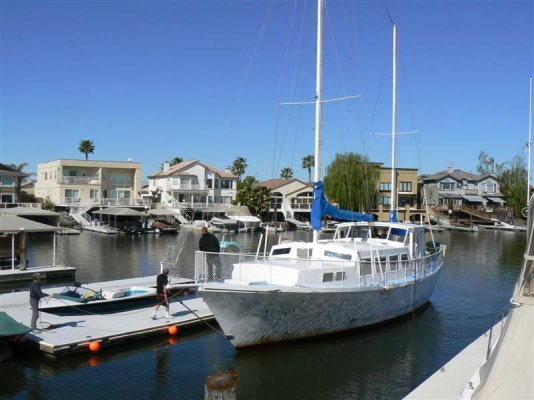Tom and Jerry,
I'm certainly not a naval architect, however I've lived on my own boat for over twenty years sailing the waters of the Caribbean and Bahamas and have seen all manner of boats and been on most of them. IMHO, the changes to the rig on the sailboat that you have suggested would surely inprove the crew's handling ability, but would likely cost more than the sailboat itself. Remember, this is a ferro boat (although there are a few VERY NICE ferrocement boats out there). Ferro boats generally are large and roomy, heavy and slow, deep-draft vessels and you're darn lucky to find someone to buy it. There is a reason that boat has a 180 hp engine.
Ferrocement boats sell for what some might call ridiculously low prices because so few people want the hassle of one. If a ferrocement boat is ever severely damaged, if the hull is cracked, it can never be fixed to the point of the original hull integrity like a fiberglass, wood, or steel boat can. If the cabin top is also ferro, you'll have a devil of a time trying to install any sort of add-ons such as larger ports, through-bulkhead gauges, vents, things of that nature.
And I agree, someone should look at the stains along the waterline. East coast boats, especially in Florida, often get similar stains due to the color of the water the vessel is moving through, but the pattern on Tom's neighbor's sailboat is not quite similar.
I wouldn't call her sleek either. At best I'd say she has nice lines and as an aside remind myself that she's got a boxy cabin. She's obviously got a lot of interior room, and that pilot house will make voyaging in bad weather a bit more comfortable. Personally, I like the ketch rig, it offers more options for sail handling in bad weather. I would suggest a cutter rig though. Adding a staysail will increase her speed and pointing ability, and let's face it, a big, bulky ferro boat can always use a bit more speed and pointing ability. Although she does appear undercanvassed, I think that increasing the size of the mainsail would not make up for the loss of the mizzen sail were that mast removed.
I don't see any anchor handling gear unless it's below that hatch on the bow. If the owner doesn't have one, he had better install a large windlass because that boat will need a big anchor along with chain and rode. I sure wouldn't want the task of pulling the anchor without a windlass.
So why do people buy ferrocement boats? Primarily, because of size. Because for the money, ferrocement boats give you more boat for the dollar. You can buy a 30' fiberglass boat or you can buy a 50' ferrocement boat.
The owner can have some great times on that boat, and with positive suggestions like Jerry's can improve handling (reefing and furling without having to go out on deck). I would love to see what the interior looks like.
Steve




